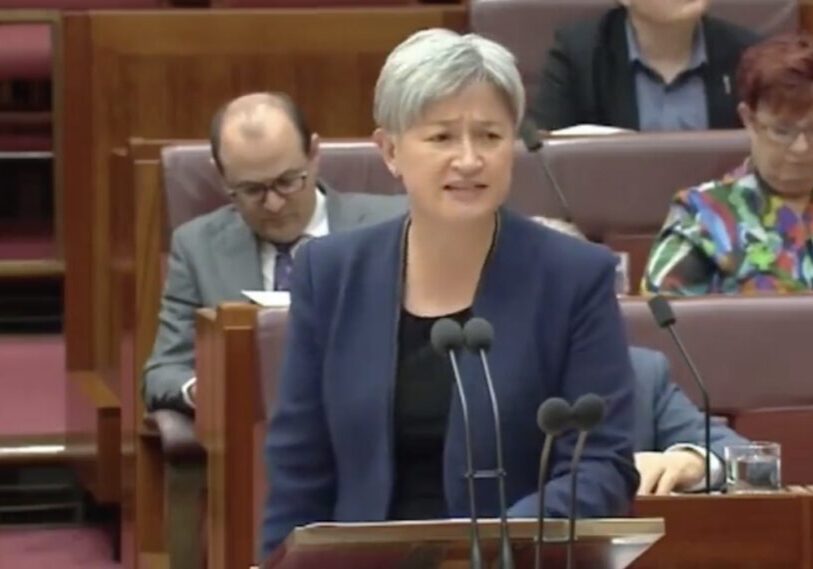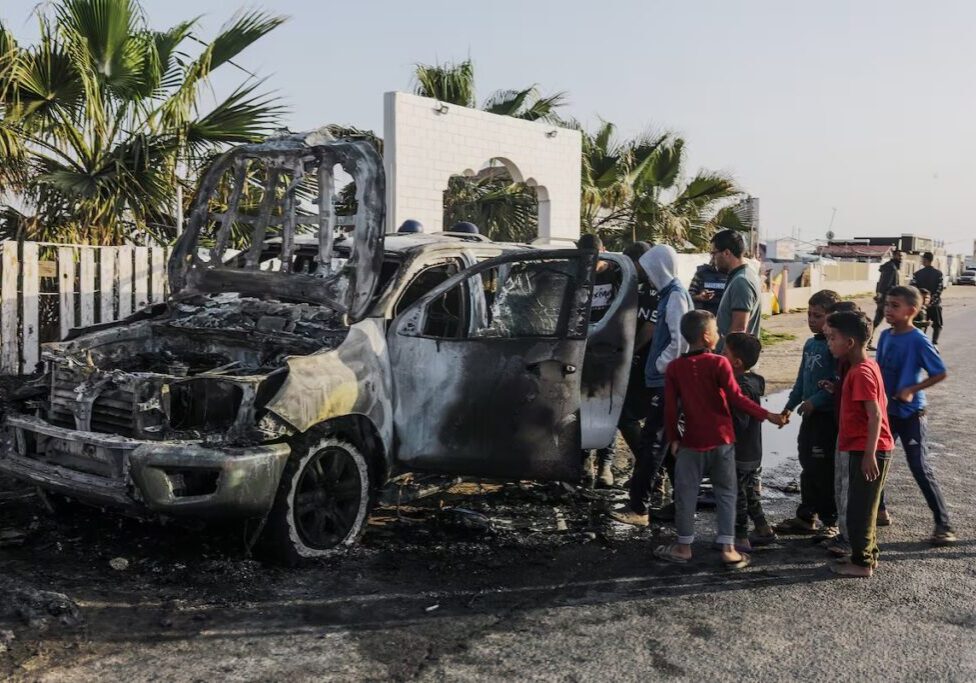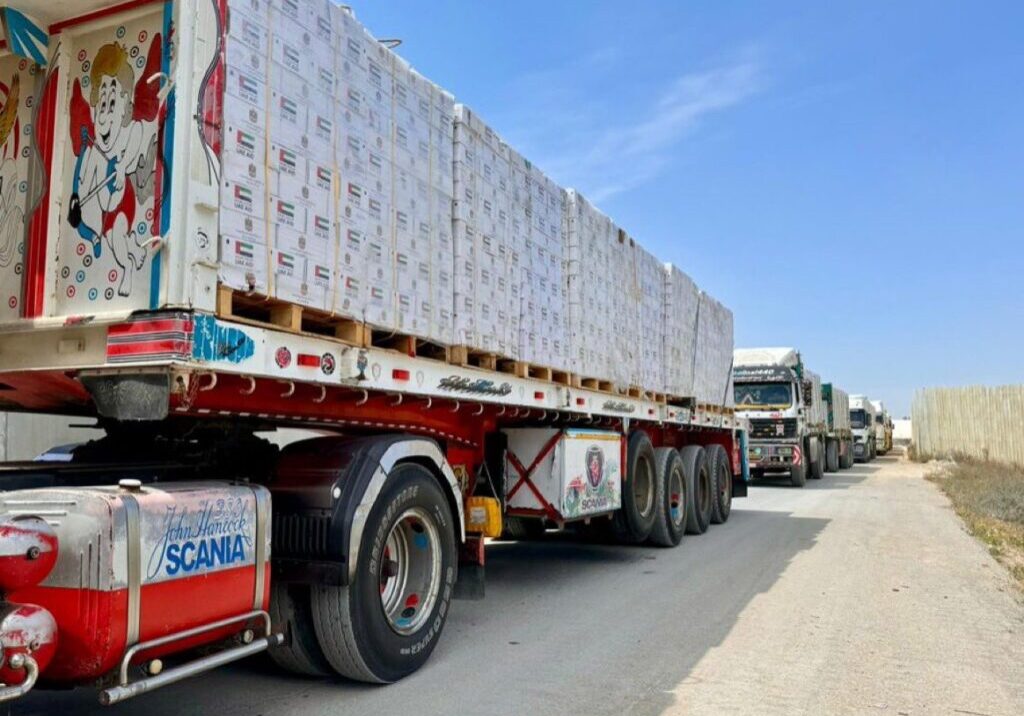Australia/Israel Review
Media Microscope: Bombing in the Rocket War
Mar 27, 2012 | Allon Lee
Allon Lee
During the four days of violence starting on March 9 that saw hundreds of rockets fired from Gaza at southern Israel, the Israeli military’s precision responses remarkably managed to limit Palestinian fatalities to 25, of whom 22 were terrorists.
However, coverage of the conflict for the Age and Sydney Morning Herald (SMH) by Ruth Pollard, Fairfax’s Middle East correspondent, consisted of two pieces that included glaring factual errors, lacked important background detail and obscured this reality.
Her first piece appeared on March 12, three days after the Israeli airstrike that killed Popular Resistance Committees (PRC) chief Zuhair al-Kaissi.
Pollard erroneously claimed al-Kaissi was among the “1027 Palestinian prisoners freed in October in the deal to release the Israeli soldier Gilad Shalit.” Wrong – al-Kaissi was not one of the Palestinians freed. Rather, he was a senior commander of one of the terrorist outfits responsible for Shalit’s capture, something he bragged about in Arab media. Pollard also did not tell readers that the PRC is accused of masterminding the major terrorist attack launched from Sinai last August which killed eight Israelis.
In the Age version, Pollard quoted the Gaza-based Palestinian Centre for Human Rights (PCHR) that “a series of Israeli air strikes on Gaza has killed a further 15 Palestinians” and in the SMH it was “17 Palestinians”. The startling omission is the fact that of the 17 Palestinians killed as of that date, 16 were terrorists (or “militants”, if you will), even according to her own source, the PCHR.
This is important, because it shows, as Israeli army spokespeople asserted, that Israel was targeting only the PRC and Palestinian Islamic Jihad (PIJ) fighters who launched 200 plus rockets and missiles at Israel following al-Kaissi’s death.
Whereas Israel deliberately limited its operations to terrorists and their infrastructure, the PRC and PIJ fired their rockets towards Israeli civilian areas – a war crime. Pollard, however, could not or would not see the difference, preferring to tag both approaches as “tit-for-tat”.
The Age version quoted PCHR director Raji Sourani claiming the airstrikes exacerbated the suffering of Gazans who “only have six to eight hours of power each day because of blockade.”
As an Israel-based journalist, Pollard should have known that, until the latest conflict, the energy crisis has been the hot issue concerning Gaza. It is generally agreed, even by Hamas, that the crisis stems from disputes between it and the Palestinian Authority over who should pay for fuel needed to generate electricity and Hamas’ refusal to pay Egypt commercial rates or accept fuel that has been transferred through Israeli crossings. It has nothing to do with the Israeli blockade, which doesn’t apply to fuel.
Yet, except for Sourani’s erroneous claim, this issue has received not one column inch from Pollard or the Fairfax press.
Pollard rounded off her piece with a lengthy but one-sided recent history of the Gaza Strip describing “severe restrictions on goods entering and leaving” and UN condemnations of this.
Two days later, on March 14, after a ceasefire was announced, Pollard filed again.
This time she noted that of the “at least” 25 Palestinians killed “most… were militants” but left unclear the ratio of militants versus civilians writing that, “several civilians, including three children, also died.” The claim about children is either false or at best highly misleading. Pollard’s own preferred source, the PCHR – not known for giving Israel the benefit of the doubt – lists only one child victim, Ayoub ‘Aamer Mohammed ‘Assaliya, 13, killed on March 10.
Two other cases where it was claimed children were killed by Israel turned out to be wrong. As the SMH itself reported (March 13), the death of Nayif Shaaban Qarmout, 15, on March 12 was initially blamed on an Israeli missile, but not only did Israel deny any firing in the area, an AFP reporter who visited the site saw no sign of “any impact… which could have been caused by a missile” and said it was more likely he was killed by “some kind of explosive device he was carrying.”
The other erroneous claim involved the death of seven-year-old Baraka al-Mughrabi on March 14, killed by a stray bullet fired into the air at a Palestinian funeral – but this occurred after the piece was published. It is unclear what basis Pollard had, if any, for her claim about three children.
Pollard’s March 14 report ended with a reference to the Muslim Brotherhood’s Freedom and Justice Party’s website statement denouncing Israel’s targeted killings. Strangely, she did not mention the much more important Egyptian Parliamentary resolution on March 12 calling for ending all ties with Israel and declaring that “Egypt after the revolution will never be a friend of the Zionist entity, the first enemy of Egypt and the Arab nation.”
Tags: Australasia






